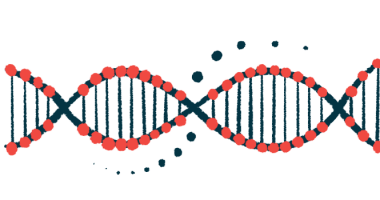East Asian people found to have more variants in DDC gene: Study
Highest frequency seen for cause of AADC deficiency among all ethic groups

People in East Asia have a higher frequency of variants in the DDC gene — the cause of aromatic l-amino acid decarboxylase (AADC) deficiency — than do those in any other ethnic groups across the world, a new study has found.
Interestingly, while Koreans had the lowest carrier frequency among East Asians, genetic variants found in this group were unique, and not seen in people from other countries in the region, including China, Japan, Mongolia, and Taiwan. The lowest incidence of carrier frequency for AADC deficiency — or the number of people carrying mutations for the disorder — was found in Latinos, the scientists noted.
“The estimated incidence of AADC deficiency was 1 in 1,374,129 worldwide and 1 in 65,266 in East Asians,” the researchers wrote, noting that their findings “demonstrated that East Asians have a higher carrier frequency of AADC deficiency than other ethnic groups.”
According to the team, the study “provides important information for accurate prediction and early diagnosis of AADC deficiency, particularly in high-risk populations, and may aid in the development of more effective targeted screening programs and gene therapies for this disorder.”
The study, “Carrier frequency and incidence of aromatic L-amino acid decarboxylase deficiency: a gnomAD-based study,” was published in the journal Pediatric Research.
DDC gene variants found in Korean people unique to that nation
AADC deficiency is an extremely rare disease caused by variants in the DDC gene that lead to low levels of the AADC enzyme in the body or the production of a faulty enzyme. As a result, the production of key brain signaling molecules, such as dopamine and serotonin, is impaired, causing nerve cells to malfunction.
Increasing efforts had been ongoing in recent years to develop a gene therapy for AADC deficiency in which a healthy copy of the DDC gene is delivered to cells, enabling them to produce normal levels of a working AADC enzyme.
To that end, PTC Therapeutics’ gene therapy Upstaza (eladocagene exuparvovec) was approved last year in the European Union and in the U.K. as the first disease-modifying medication for AADC deficiency. The company is planning to apply for U.S. approval in the coming months.
“With the recent development of treatments for AADC deficiency, it will be particularly important to know the carrier frequency and incidence” of the disorder, the researchers wrote.
However, there is limited evidence globally on AADC deficiency carrier frequency, or the number of people worldwide carrying mutations in the DDC gene.
With this in mind, a team of researchers in South Korea sought to assess the carrier frequency and expected rate of AADC deficiency across populations, including among different racial and ethnic groups.
With the recent development of treatments for AADC deficiency, it will be particularly important to know the carrier frequency and incidence [of the disorder].
The team used genetic information available in the Genome Aggregation database (gnomAD), a publicly available database developed by an international coalition of investigators that includes data from various genome sequencing projects. The genome is the entire genetic material of an organism.
“In open genome databases, the genomic data of various ethnic groups are included, making these suitable for predicting carrier frequency and studying estimated incidence rates,” the team wrote.
In all, the scientists analyzed 125,748 exomes, the parts of the genome that code for proteins. The greatest proportion of exomes was from non-Finnish European people (45.2%), followed by Latino/Admixed Americans (13.8%) and South Asians (12.2%). The database also included exomes from 9,197 people from East Asia (7.3%), among whom 1,909 were Korean.
The DDC variants found in gnomAD were classified based on their disease-causing potential, according to validated guidelines and three disease classification databases. These three databases were the ClinVar, the Human Gene Mutation Database (HGMD), and the Locus-Specific Database of Gene Variants Causing BH4 Deficiencies and related pediatric neurotransmitter disease (PNDdb).
Study is 1st to use gnomAD database to identify DDC gene carriers in East Asia
The worldwide carrier frequency of AADC deficiency was 0.17%, the researchers found. The highest frequency was seen in East Asians (0.78%) and the lowest in Latinos (0.07%).
The researchers noted that the carrier frequency in Koreans was the lowest among East Asians (0.16%), more closely matching the worldwide frequency than that of other Asian populations.
According to ClinVar, the carrier frequency of DDC gene variants was 0.09% worldwide and 0.72% in East Asians. A similar difference in carrier frequency was seen using the PNDdb, with rates of 0.15% worldwide and 0.77% in East Asians.
In turn, data from the HGMD showed that the carrier frequency was 0.75% both worldwide and in East Asians.
The distribution of variants deemed disease-causing or likely disease-causing differed between regions.
Particularly, the c.714+4A>T variant was the most frequent worldwide, but was only detected in East Asians. The next two most common variants, c.367G>C and c.1040G>A, were found in ethnicities across the world, but were absent in East Asians.
In fact, the researchers observed that disease-causing or likely disease-causing variants detected in East Asians — other than c.714+4A>T — were only detected in African and non-Finnish European populations, but were absent from other ethnic groups.
Also, variants found in Korean individuals were unique to that group and not found in other East Asians populations.
“This study is the first to identify carrier frequencies in East Asians, including subpopulations of East Asians, using gnomAD,” the researchers wrote.
The results “confirmed that East Asians have a higher carrier frequency than other ethnic groups, and Koreans have lower carrier frequencies than other East Asians, similar to the global carrier frequency,” they added.
The findings also highlighted that variants in East Asians and Koreans differed greatly from those found in other ethnic groups.
“Our data may serve as a reference for further investigation of AADC deficiency,” the team concluded.








